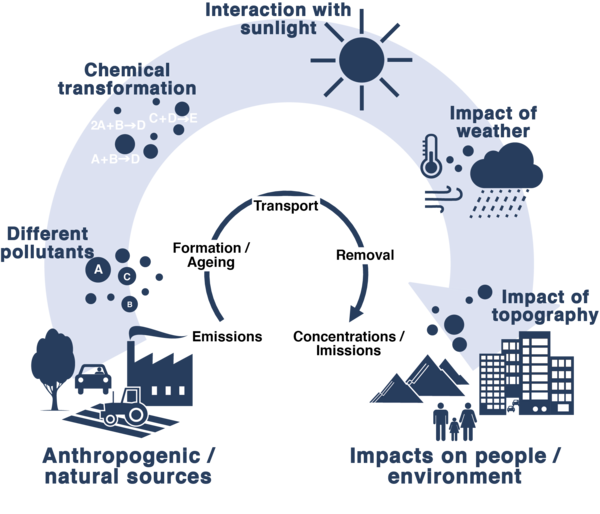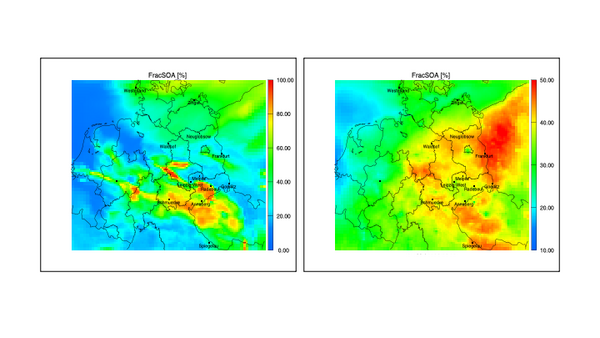
Towards a better understanding of air pollution from emissions to exposure. Source: After EEA.


Towards a better understanding of air pollution from emissions to exposure. Source: After EEA.
To find effective and cost-saving ways of complying with existing and future legal limits for gaseous air impurities and particles of different sizes, the use of models is indispensable. After the previous successful cooperation with the Saxon State Ministry for Environment and Agriculture and the Federal Environmental Agency, the Modeling Department will continue to be active in this field nationally and internationally.

Fig. 1: Modeled SOA contribution to PM10 mass concentrations: Snapshot on May 27, 2014 (14:00) (left) and mean value for the period May 9-27, 2014 (right).
Examples for regional investigations with COSMO-MUSCAT are the following projects:
Modeling of transport and transformation of atmospheric aerosol in Central Europe with focus on anthropogenic sources (DFG project TRACE);
Investigation of the influence of biogenic emissions on air quality in central Germany (DBU project);
Estimation of particle mass increase due to secondary formation of ammonium sulfate and nitrate in cooling tower plume caused by SO2 and NOx emissions from large combustion plants discharged directly through the cooling towers (UBA project CheTAL);
Investigations on trends, causes and effects of ozone pollution in Saxony (LfULG project);
Modeling of the influence of elevated NH3 concentrations mainly from agriculture in Lower Saxony and the Netherlands on PM pollution in Saxony; In particular, the contribution of heterogeneous N2O5 hydrolysis was also estimated (Chen et al., 2019).
Investigation of the influence of changes in energy policy and climate on air quality in Germany (UBA project KLENOS);
Determination of the sources of odors and high pollutant concentrations in the Erzgebirge via air mass trajectory modeling (LfULG Saxony);
Dispersion modeling of amine chemistry on a regional scale when using carbon capture and storage (CCS) technologies in power plants;
Comparative studies on European air quality within the AQMEII project
These results are of great interest for environmental compliance, future epidemiological studies and also for deriving efficient emission reduction measures on local and regional scales.